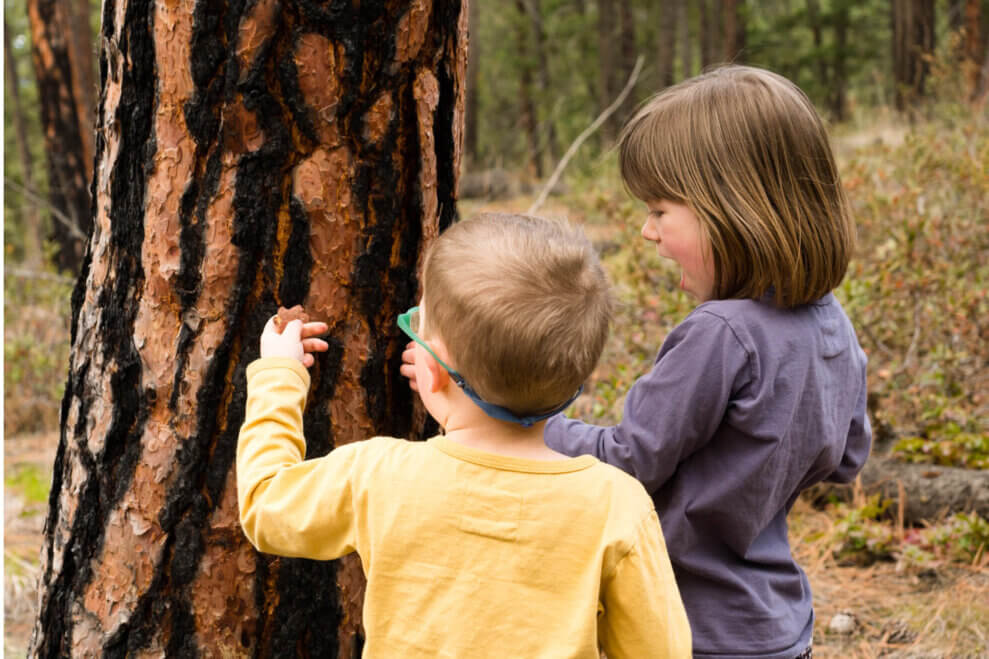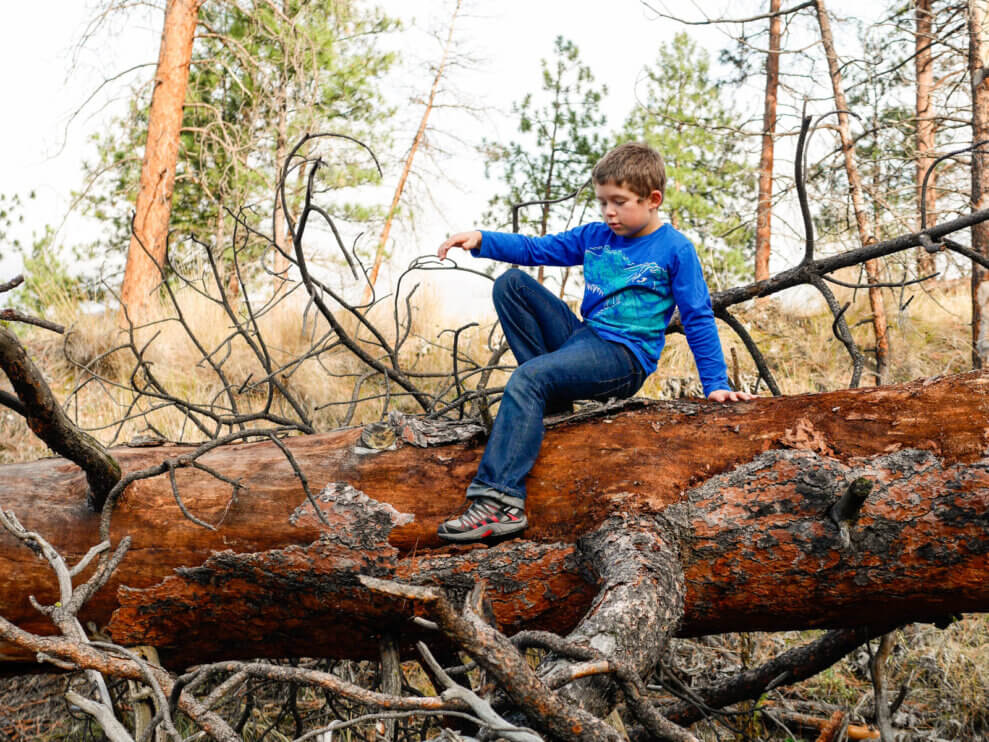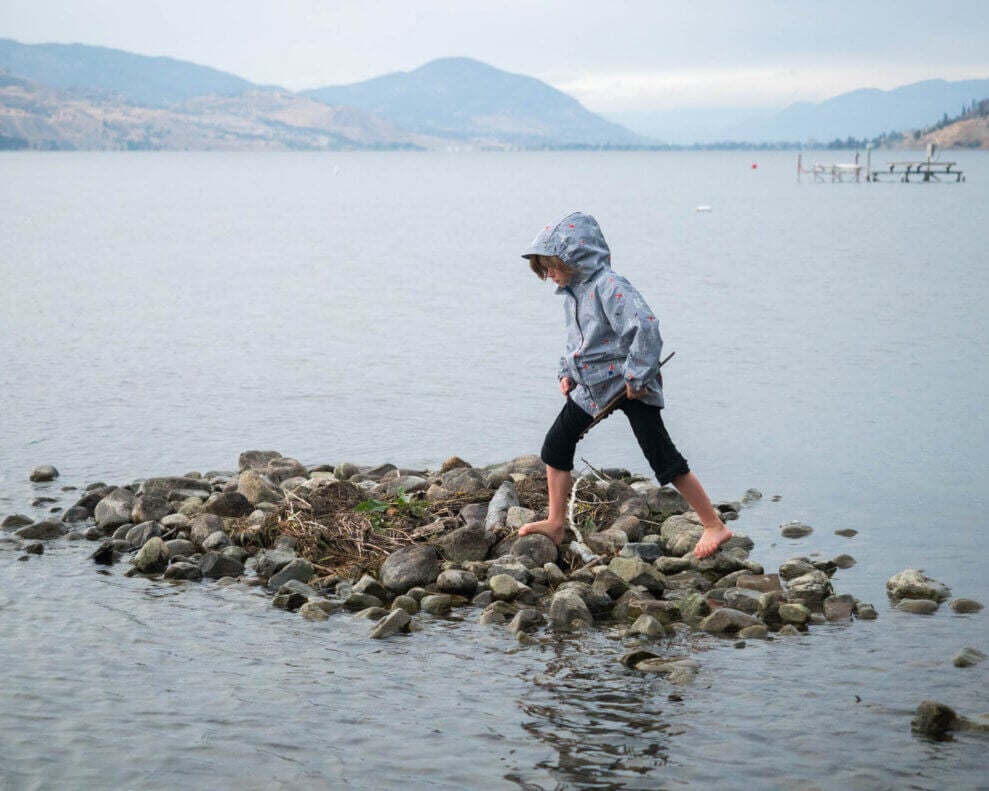
20 outdoor sensory play activities for young children + free printable
Sensory play is abuzz right now! But what is sensory play and why is it so popular? Maybe you’ve seen pictures of sensory bins filled with rainbow rice or sensory tables decked out with bins of sand, water, and themed figurines. While these setups are inspiring, you don’t need fancy things for sensory play. In fact, everything your child needs for engaging sensory play can be found outside.
Before I jump ahead of myself, let’s start with a short description of sensory play, how it can benefit your child, and what’s special about outdoor sensory play. Then I’ll share 20 fun outdoor sensory play activities that your child can enjoy no matter where you live.
What is sensory play?
Sensory play includes activities that engage young children’s senses. Typically we think of the senses as being sight, hearing, smell, taste and touch, but vestibular (movement and balance) and proprioception (body position) are senses too. Yes, there are seven senses! Sensory play encourages children to use all their senses, perhaps not at the same time, but it usually targets a few.

Why is sensory play important?
Everyone relies on their senses to make sense of the world, but young children even more so. That’s why from the ages of birth to five, young children are forever putting things in their mouths, grabbing things, and climbing on everything. It definitely keeps us parents, caregivers, and educators on our toes! That being said, sensory play has many benefits. What makes it so important is that it plays a crucial role in a young child’s brain development. Sensory play helps young brains make new connections, strengthen pathways, and prune unnecessary synapses.
When young kids engage their senses through play, they learn a host of important skills such as cognitive skills (developing knowledge), fine motor skills (grasping small items), gross motor skills (balancing and walking), language skills (learning words), problem-solving skills (reasoning), memory skills (remembering experiences), social skills (collaborating), and emotional regulation skills (managing and expression emotions).
That’s a lot of skills! And sensory play also helps young children develop sensory integration. Sensory integration happens when kids process what they’re sensing and use that information to make appropriate choices. A simple example of sensory integration would be when a child sees the ball, uses movement and balance to pick it up, recognizes through touch and sight that it’s a ball for throwing, and throws it to another person. Sensory play helps young children integrate all their sensory experiences and learn how to react to them. Pretty neat!

What’s special about outdoor sensory play?
It’s been my experience as a mom of four that the best kind of sensory play is actually right out the front door: outside! What makes outdoor sensory play so special is that it doesn’t require special bins, tables, or tools to be fun and engaging. It’s accessible to all, no matter where you live, or what season it is. Engaging sensory play can happen at a park, in a backyard, along a nature trail, on a beach or in a puddle. It can happen in the winter, spring, summer and fall.
Just the other day I brought my young toddler to a playground. Her favourite part was the pea gravel on the ground. For 15 minutes she squatted in one spot and used her little fingers to dig, scoop, and drop handfuls of pea rocks. In that moment, so much was happening! She was using fine motor skills to pick up rocks, gross motor skills to balance, and problem-solving skills to scoop the rocks. Her sense of touch, sight, and hearing (and taste—she did try to put them in her mouth…) were all being activated.
A quick word about sensory play safety outdoors: There are many wonderful sensory play opportunities outdoors and it’s important to give young kids the freedom to play and explore and even take risks. However, it’s also important to scan your environment for hazardous items or situations that cause serious harm to your child. If you spot something that can cause serious harm take action by removing the danger or removing your child from the danger.

Outdoor sensory play activities
Here’s a list of fun outdoor sensory play activities to invite your young child to try out:
- Play with rocks: Rocks come in all shapes in sizes. Pebbles, pea rocks, and gravel are great for manipulating, holding, scooping, dumping, shoveling, digging, and collecting, which develop a child’s sense of touch, hearing, and sight. You can find small rocks at play parks, on beaches, along creeks, and on trails. Quick tip: Encourage your child to find a favourite rock to bring home and start a rock collection.
- Walk barefoot on grass: Walking, skipping, and running barefoot on grass, sand, mud, or pebbles is a unique sensory experience that helps develop a child’s sense of touch as well as their vestibular and proprioception senses. Safety tip: Watch out for honeybees if there’s flowering clover in the grass. Also watch out for glass or other sharp objects.
- Roll down a grassy slope: Do you remember doing this as a child? I sure do. Rolling down a grass hill is a great way for developing a child’s vestibular and proprioception senses. It also stimulates their sense of smell and touch.
- Play with water: Water play is a classic sensory activity. Splashing, stomping, scooping, pouring, and funneling engages all the senses. Water play outside can be fun and messy and can happen around natural bodies of water like lakes, creeks, ponds, and puddles and also in sprinklers, pools, buckets, or water tables. Safety tip: Always supervise young children near water.
- Make mud pies: Some kids don’t like exploring sticky, squishing, slimy sensations but most can be convinced with activities like making mud pies and mud cakes. Quick tip: If you have a yard, set up a simple mud kitchen for mud play. Here’s how to DIY one!
- Dig for worms: There’s a whole world of curious critters under the surface of soil. Digging in the dirt and holding slimy worms develops a child’s sense of touch, sight, vestibular, and proprioception. Quick tip: Worms come out after rainfalls and can be found along sideways and roads. This is a great option for holding a worm if you don’t have access to dirt for digging in.
- Swing from a tree (or monkey bars): Hanging and swinging on a sturdy tree branch or monkey bars develops a child’s vestibular and proprioception senses. Look for sturdy branches or monkey bars at parks and along trails.
- Make a sensory bin from nature items: Invite your young child to make their own sensory bin by collecting things like shells, pinecones, rocks, sticks, and leaves to bring indoors. Look for items with different shapes and textures. Place the items in a bin or basket for your child to explore. This activity will help your child develop their sense of touch and sight.
- Jump into a pile of leaves: Raking, collecting, tossing, and jumping in piles of leaves is a classic sensory play activity that engages all the senses. Quick tip: Young children enjoy imitating their caregivers. If you can find a child-sized rake, they’re likely to help you make a big leaf pile.
- Dig in sand: Sand can be fine or coarse, dry or wet. It’s great for shoveling, scooping, dumping, moving, shaping, and sculpting, which develop a child’s sense of touch, sight, vestibular, and proprioception. You can find it on beaches, in parks or backyards (a sand box). Quick tip: Make a mini sandbox outside using a shallow bin and bag of sand from a hardware store.
- Play with sticks: A stick can be so many things: a wand, a sword, a shovel, or even a fishing pole. Picking up, gathering, and playing with sticks engages the imagination and the senses. Quick tip: Challenge your young child to find different types of sticks (short, long, skinny, wide, lumpy, smooth etc.)
- Go on a noise scavenger hunt: Adult brains filter most sounds that come our way—a skill called auditory selective attention. Young children develop this skill but it takes time. It’s one of the reasons they become overstimulated in noisy environments. To help kids develop their sense of hearing, make a game of trying to identify sounds outside: wind blowing, leaves rustling, birds chirping, squirrel chattering, airplane flying, cars honking. How many sounds can you hear?
- Climb boulders: Small boulders and large rocks are great for climbing, balancing, scrambling, and clambering, which help develop a child’s vestibular and proprioception senses. You can find boulders at nature play parks, on beaches, and along trails. Safety tip: Avoid helping your child climb rocks, trees, or other features that are beyond their abilities. This way they’ll be more likely to get back down safely on their own. To prevent a fall, you can “spot” your child by staying close by with your arms extended towards them.
- Balance on a log (or beam): Walking along and balancing on a log or beam helps children develop their vestibular and proprioception senses. You can find logs and beams on beaches, along trails and in parks. Encourage your child to try going barefoot to engage their sense of touch. Is it easier balancing with bare feet?
- Finger paint with mud: Finger painting with mud engages multiple senses and it’s fun too. Encourage your child to paint things like rocks, driveway, a wood board, or newspaper.
- Spin in circles: Young children love to spin! Why? It’s because it helps develop their vestibular and proprioception senses. Spinning can take place in yards and parks, and most playgrounds have spinning equipment.
- Play in the rain: Rainy-day play is a multi-sensory experience. Rain has unique smells, sights, sounds, and touches. It also makes the ground more slippery and creates puddles to explore and play in. Quick tip: Young children enjoy playing in the rain especially when properly dressed for the weather in rain gear.
- Search for smells: Developing kids’ sense of smell also develops their sense of taste and their vocabulary. No matter what the season there are plenty of unique smells outdoors. Encourage your child to smell flowers, leaves, evergreen needles, grass, dirt, pinecones, and rocks.
- Hug trees: The outdoors is full of textures that stimulate a young child’s sense of touch and sight. One fun activity is learning about different textures on trees. Invite your child to hug a tree. What does it feel like? Is the bark rough? Are the branches prickly? Your child can even make bark rubbings to bring home.
- Go on a sensory scavenger hunt: This fun activity weaves together all seven of your child’s senses. Look for things outdoors to smell, hear, see, touch, and taste and playfully move around to find them. Bring along the printable [PDF] below to help guide your child! Skip around your yard, run along a beach or jump through a park. Most importantly, have fun together!

The wonderful thing about sensory play is that young kids are naturally drawn to it. Simply by going outdoors, even without a specific plan, your child will find enriching sensory play opportunities. And as a plus, there will be no rainbow rice to clean up off your floors afterwards!
Which activity did your child like best? Let us know in the comments!
Photos courtesy of Josée Bergeron.






Wonderful ideas and great information.
Wow- sounds like my childhood!
So I suggest, “ Just ask a grandparent”!
Can’t fathom that parents today could be so far from nature,curiosity and imagination!!
Sad , indeed!
I can’t speak for everyone but many parents never had the chance to be a child. For countless people, its a learning process. I think it’s very judgmental of you to assume every person had the chance to explore their surroundings growing up. My father abandoned my family before my birth and my mother worked 12 hour shifts to make ends meet. I took care of my younger siblings while being a child myself. I’m glad this website exists to teach new parents how to fully experience the joys of raising a child and learn to be one themselves! :) I’ll be using these activities as a guide to living a happy life. Thank you.
Thank you so much for this comment, Michael! It’s so good to know that our content is making a difference for someone! We greatly appreciate readers like you. Your positivity is a wonderful thing! :)
Saving the sensory scavenger hunt to use with my child!
Wonderful ideas, I love all of your activities. They are so helpful.